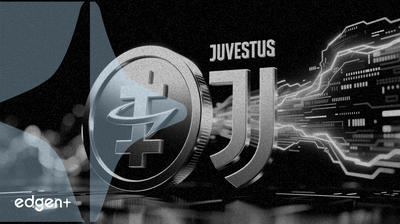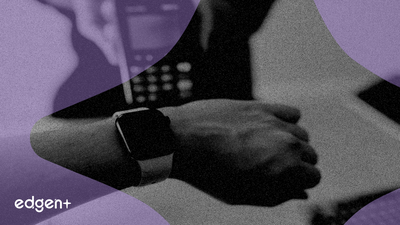Retour


## Résumé Tether, l'opérateur du stablecoin **USDT**, a soumis une proposition entièrement en espèces pour acquérir la participation majoritaire de 65,4% d'**Exor** dans le club de football italien **Juventus FC**. L'offre est assortie d'un engagement à injecter un milliard de dollars supplémentaires dans le club une fois l'acquisition finalisée. Cette démarche représente une poussée stratégique significative d'une entité majeure du secteur des cryptomonnaies vers le monde du sport traditionnel, visant à exploiter ses réserves de capitaux substantielles pour acquérir une marque reconnue mondialement et stabiliser sa situation financière. ## L'événement en détail La proposition expose une stratégie financière à deux volets. Premièrement, une acquisition entièrement en espèces de la participation majoritaire d'**Exor** transférerait le contrôle du club à **Tether**. Deuxièmement, un apport de capital ultérieur d'un milliard de dollars est destiné à apurer les dettes existantes et à investir dans la capacité opérationnelle et compétitive du club. La transaction, si elle aboutit, marquerait l'une des intersections les plus médiatisées de l'industrie des actifs numériques et des institutions traditionnelles, potentiellement en retirant la Juventus de la cote et en la plaçant sous propriété privée du géant de la cryptomonnaie. ## Mécanismes financiers et contexte stratégique Les clubs de football européens sont souvent caractérisés par des niveaux d'endettement substantiels. **Manchester United** (NYSE: MANU), par exemple, a récemment signalé que sa dette nette avait dépassé 1 milliard de dollars après un rachat par effet de levier. D'autres clubs ont recherché des structures de financement complexes pour gérer leurs passifs. **AC Milan** a récemment sollicité un prêt privé de type « holdco » d'environ 600 à 700 millions de dollars pour refinancer la dette détenue par son ancien propriétaire, Elliott Investment Management, en utilisant des instruments avec des options de paiement en nature (PIK). Dans ce contexte, l'offre entièrement en espèces de **Tether** présente une approche nettement différente. Plutôt que de s'appuyer sur l'actif pour financer son propre achat, **Tether** vise à utiliser son capital existant pour désendetter entièrement le club. Cette stratégie ressemble moins aux rachats par effet de levier courants dans le sport et plus à une acquisition stratégique par une société privée riche en liquidités, telle que la récente acquisition entièrement en espèces de 36 milliards de dollars de **Kellanova** par **Mars, Incorporated**. Cette démarche fournirait à la **Juventus** un bilan sain, un avantage concurrentiel significatif dans une industrie à forte intensité capitalistique. ## Implications plus larges pour le marché Une acquisition réussie servirait de validation majeure pour **Tether** et l'écosystème plus large des cryptomonnaies. Pour **Tether**, cela représente une diversification stratégique, déployant ses vastes réserves dans un actif non numérique de premier plan. Cela pourrait renforcer sa légitimité et démontrer une vision à long terme au-delà des limites des marchés des cryptomonnaies. L'accord pourrait également établir un nouveau modèle pour les entreprises cryptomonnaies, prouvant que les bénéfices générés dans l'espace des actifs numériques peuvent être déployés efficacement pour acquérir et revitaliser de grandes marques dans le monde physique. Une telle initiative signale une maturation de l'industrie, passant du trading spéculatif à la finance d'entreprise stratégique, encourageant potentiellement d'autres entreprises cryptomonnaies à poursuivre des acquisitions similaires d'actifs traditionnels dans le sport, les médias et d'autres secteurs. ## Commentaires d'experts et précédents Les observateurs du marché notent que l'acquisition proposée fera l'objet d'un examen réglementaire intense, similaire à toute transaction de fusion-acquisition transfrontalière majeure. L'approbation inconditionnelle de l'accord **Mars-Kellanova** par 28 organismes de réglementation à travers le monde fournit un précédent récent pour les complexités impliquées. Les régulateurs se concentreront probablement sur la source des fonds et la stabilité à long terme de l'entité acquéreuse. Bien que l'accord soit non conventionnel, il existe un appétit démontré des investisseurs pour les entreprises de grande envergure et transformatrices, comme en témoigne l'anticipation du marché pour une potentielle introduction en bourse de **SpaceX**. Les analystes suggèrent que **Tether** fournit la « substance » — une injection de trésorerie substantielle — pour le « prestige » d'une marque de football de renommée mondiale. Le succès de cette offre non seulement modifierait le paysage financier du football européen, mais redéfinirait également les frontières entre les économies numériques et traditionnelles.

## Résumé exécutif Ripple étend stratégiquement l'utilité de son actif numérique natif, **XRP**, en le rendant disponible sur les blockchains **Ethereum** et **Solana**. Cette initiative vise à intégrer **XRP** dans l'écosystème plus large de la finance décentralisée (DeFi), au-delà de son cas d'utilisation traditionnel dans les paiements transfrontaliers. L'expansion tire parti de la technologie de pont pour créer des versions enveloppées de **XRP**, lui permettant d'interagir avec des contrats intelligents et des applications sur ces plateformes DeFi de premier plan. ## L'événement en détail Le lancement de **XRP** sur **Ethereum** et **Solana** est facilité par des ponts inter-chaînes, avec **Hex Trust** et **LayerZero** identifiés comme des partenaires technologiques clés. Ce mécanisme implique le verrouillage du **XRP** natif sur son propre registre et l'émission d'un jeton **XRP** "enveloppé" équivalent (wXRP) sur la blockchain cible. Ce jeton enveloppé est entièrement garanti par l'actif natif, assurant la parité des prix. Cette approche technique permet à **XRP** d'acquérir les fonctionnalités d'un jeton ERC-20 sur **Ethereum** ou d'un jeton SPL sur **Solana**. En conséquence, les détenteurs peuvent utiliser leur **XRP** dans un large éventail d'applications DeFi, y compris des échanges décentralisés (DEX) comme Uniswap ou Serum, des protocoles de prêt tels qu'Aave et Compound, et diverses plateformes de yield farming natives de ces écosystèmes. ## Implications du marché Cette expansion a le potentiel d'augmenter considérablement la liquidité et le volume de transactions de **XRP** en exploitant les pools de liquidité profonds des marchés DeFi **Ethereum** et **Solana**. Pour les traders et les développeurs sur ces plateformes, elle introduit un nouvel actif très liquide pour les paires de trading, la collatéralisation et d'autres stratégies financières. Cependant, cette initiative introduit également une concurrence pour les actifs existants au sein de ces écosystèmes. Le succès du **XRP** enveloppé dépendra de son taux d'adoption par les protocoles DeFi et de la volonté des utilisateurs de transférer leurs actifs. L'implication principale est la transformation de **XRP** d'un actif axé sur le paiement en un instrument plus polyvalent pour les services financiers décentralisés, augmentant potentiellement son utilité et sa demande globales. ## Commentaire d'expert Le pivot stratégique vers une utilité plus large s'aligne sur les récentes réalisations réglementaires de Ripple. Suite à l'approbation conditionnelle du Bureau du Contrôleur de la Monnaie (OCC) pour une licence de banque fiduciaire nationale, le PDG de Ripple, **Brad Garlinghouse**, a souligné l'accent mis par la société sur la conformité et l'innovation. Dans une déclaration concernant la décision de l'OCC, il a noté que c'était une "étape massive" pour l'industrie, soulignant un engagement à opérer sous la supervision fédérale. Les analystes de marché ont vu ces développements parallèles favorablement. Un expert, connu sous le nom de 'Steph is Crypto', a décrit l'approbation imminente de la licence bancaire comme un catalyseur "haussier" pour **XRP**, un sentiment partagé par d'autres membres de la communauté financière qui considèrent la clarté réglementaire comme un précurseur de l'adoption institutionnelle. ## Contexte plus large La stratégie multi-chaînes de Ripple et sa quête d'une licence de banque fiduciaire nationale sont des composantes interconnectées d'un objectif plus vaste : intégrer **XRP** et les services associés dans le système financier réglementé. En obtenant une licence fédérale, Ripple peut offrir des services de garde et de règlement pour les actifs numériques et traditionnels sous la supervision fédérale directe. Ce statut est crucial pour attirer les clients institutionnels qui exigent des contreparties réglementées. L'approbation ouvre également la voie à l'intégration du stablecoin prévu par Ripple, **RLUSD**, dans le système bancaire américain. Une récente décision de l'OCC autorisant les banques nationales à utiliser des actifs numériques pour le règlement renforce encore cette position. Cette approche à deux volets – expansion dans les écosystèmes décentralisés tout en obtenant simultanément une position dans la finance traditionnelle – positionne Ripple pour combler le fossé entre les deux, un objectif stratégique partagé par d'autres acteurs majeurs comme **Circle** et **Paxos**, qui ont également reçu l'approbation conditionnelle de l'OCC.

## Résumé exécutif Interactive Brokers a annoncé qu'il accepterait désormais les stablecoins pour le financement des comptes d'investisseurs de détail. Cette décision représente une démarche stratégique pour rester compétitif alors que le secteur des services financiers intègre de plus en plus les actifs numériques. La fonctionnalité devrait être introduite par un déploiement progressif, en commençant par une partie de la clientèle américaine éligible de la firme. Cette initiative marque une étape importante pour combler le fossé entre les marchés financiers traditionnels et l'écosystème des monnaies numériques. ## L'événement en détail Selon l'annonce, les investisseurs de détail chez **Interactive Brokers** auront la possibilité de déposer des stablecoins directement sur leurs comptes de trading. Cette initiative est conçue pour améliorer l'efficacité et la rapidité du financement par rapport aux méthodes traditionnelles. La firme a positionné cette mesure comme une étape nécessaire pour maintenir sa position concurrentielle dans un paysage financier en évolution rapide où les actifs numériques deviennent plus prévalents. La phase initiale ciblera un groupe sélectionné de clients américains, avec des plans pour une disponibilité plus large à suivre. ## Décryptage des mécanismes financiers Cette intégration permet aux investisseurs d'utiliser des stablecoins adossés à des monnaies fiduciaires, tels que l'**USDC**, comme instrument de financement direct. Contrairement aux virements bancaires traditionnels (ACH ou virement bancaire), qui sont soumis aux heures bancaires et peuvent prendre plusieurs jours ouvrables pour être réglés, les transactions en stablecoin peuvent être traitées presque instantanément, 24h/24 et 7j/7, sur leurs réseaux blockchain respectifs. Ce mécanisme réduit les temps de règlement et peut diminuer les coûts de transaction, offrant une rampe d'accès plus efficace pour déployer des capitaux sur les marchés boursiers. En tirant parti de l'infrastructure blockchain, le processus contourne les voies de paiement conventionnelles pour la partie dépôt de la transaction. ## Implications pour le marché La décision d'**Interactive Brokers** devrait accroître la pression concurrentielle sur les autres grandes sociétés de courtage pour qu'elles adoptent des capacités similaires. À mesure que les investisseurs s'habituent à la rapidité et à la commodité des transactions d'actifs numériques, les courtiers dépourvus de ces points d'accès pourraient faire face à un désavantage concurrentiel. Ce développement est également destiné à accélérer l'adoption généralisée des stablecoins, normalisant leur utilisation comme outil financier standard pour le transfert de valeur plutôt que comme actifs cryptographiques purement spéculatifs. Il offre une utilité clé en créant une connexion plus fluide entre l'économie numérique et les plateformes d'investissement traditionnelles. ## Commentaires d'experts et contexte plus large Cette initiative d'**Interactive Brokers** s'aligne sur une tendance plus large des sociétés financières établies intégrant la technologie stablecoin. **Visa**, par exemple, a déjà intégré les stablecoins dans son réseau de paiement mondial. **Yanilsa Gonzalez-Ore**, vice-présidente principale chez **Visa Direct**, a noté que l'entreprise est à l'« avant-garde des paiements en temps réel et des technologies émergentes, comme l'IA et les stablecoins ». En novembre, **Visa** a lancé un programme pilote permettant les paiements en stablecoin en **USDC** pour les créateurs et les travailleurs de l'économie à la demande, démontrant la viabilité de l'utilisation des monnaies numériques pour des paiements mondiaux plus rapides et plus efficaces. Ces actions de grands acteurs financiers tels que **Visa** confèrent une crédibilité significative à la voie stratégique qu'**Interactive Brokers** poursuit actuellement, la présentant comme une adaptation nécessaire à l'infrastructure financière moderne.